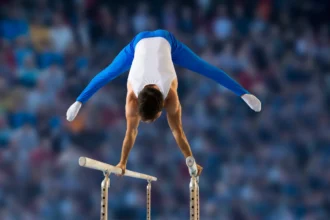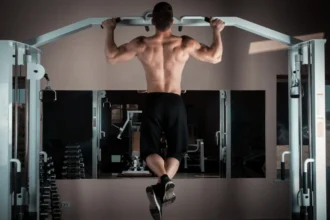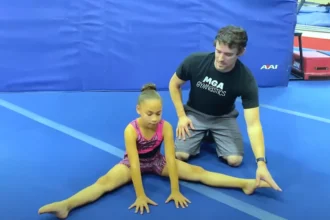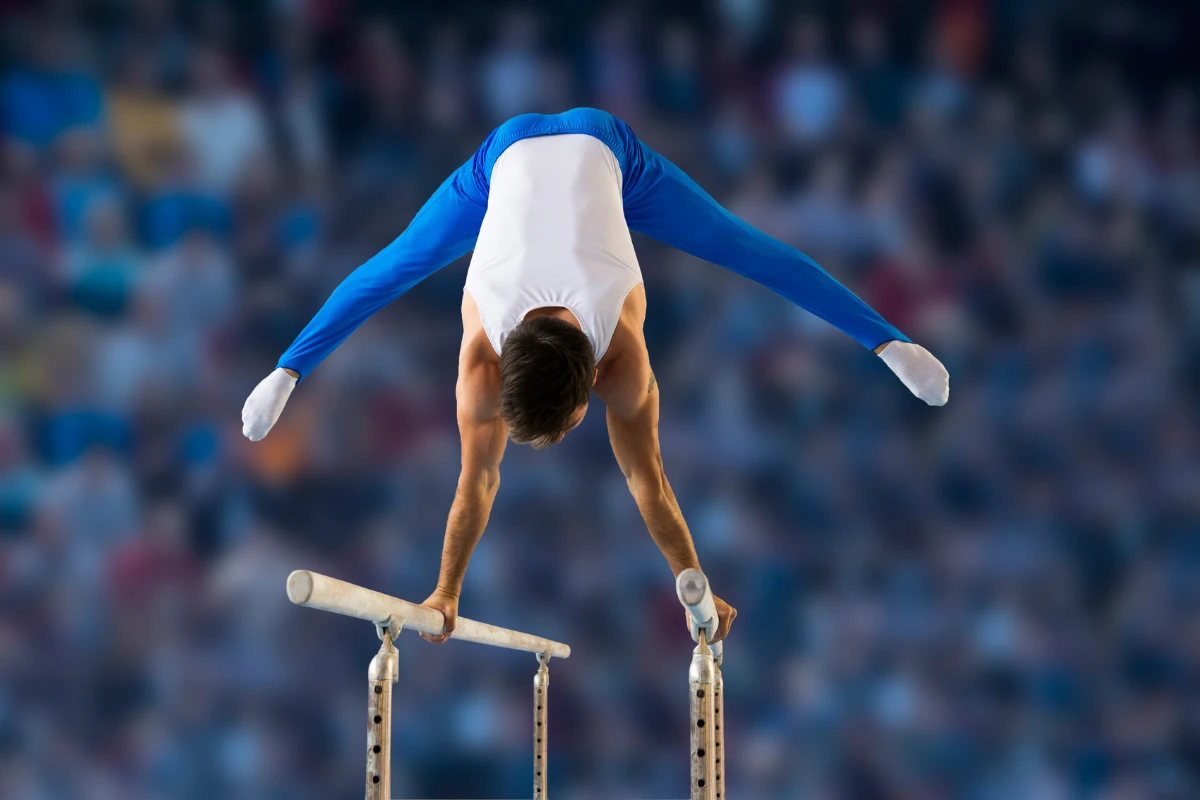Men’s gymnastics at the Olympics is a thrilling display of athleticism, skill, and mental toughness. The term “rotation” in gymnastics refers to the sequential order in which athletes move from one apparatus to another throughout a competition. Each gymnast must perform routines on various apparatuses, with the rotations organized to test different physical and technical abilities.
The Structure of Men’s Olympic Gymnastics Events
The Olympic men’s gymnastics competition consists of six core apparatuses, each targeting different aspects of a gymnast’s physical prowess. These events are:
- Floor Exercise
- Pommel Horse
- Still Rings
- Vault
- Parallel Bars
- Horizontal Bar
Each apparatus demands a unique set of skills. For example, the floor exercise emphasizes tumbling and flexibility, while the pommel horse tests balance and precision. The still rings require upper-body strength and stability, whereas the vault challenges speed and aerial control.
The parallel bars demand synchronization of strength and balance, and the horizontal bar combines swinging techniques with strength and flexibility. Together, these six apparatuses form the foundation of men’s gymnastics at the Olympic level.
Individual All-Around Event
In the individual all-around competition, gymnasts compete on all six apparatuses, with the goal of showcasing their versatility. The event typically consists of two main rounds: the qualification round (prelims) and the final round.
Rotation in the All-Around
The rotations in the all-around event follow a strict order, with all gymnasts rotating together from one apparatus to the next. While each gymnast performs their routine individually, they start each apparatus at the same time. The rotation order for the men’s Olympic gymnastics all-around event is:
- Floor Exercise
- Pommel Horse
- Still Rings
- Vault
- Parallel Bars
- Horizontal Bar
This pre-determined order ensures fairness, as it allows all athletes to compete under similar conditions. Gymnasts must complete their routines within a set timeframe, balancing speed with precision as they transition from one apparatus to the next.
The Importance of Timing
The timing of these rotations is critical. Gymnasts have only a few minutes between each routine to prepare for the next, which means they must maintain focus, manage their energy, and quickly adjust to the different physical demands of each apparatus.
For example, transitioning from the high-intensity floor exercise to the more strength-focused still rings requires both physical endurance and mental sharpness.
Team Competition Rotation
The team competition in men’s gymnastics also follows the same rotation structure but involves more athletes. Typically, a team consists of five gymnasts representing their country. Each gymnast performs on each of the six apparatuses, but the team must rotate in a specific order.
The format often follows the “four up, three count” rule, which means that four gymnasts from each team perform on each apparatus, and only the top three scores from those four routines count toward the team’s total score.
Team Rotation Process
Each team member performs once per apparatus, and the team rotates through the apparatuses in the same Olympic order:
- Floor Exercise
- Pommel Horse
- Still Rings
- Vault
- Parallel Bars
- Horizontal Bar
The team’s final score is determined by adding the best three scores for each apparatus. This rotation ensures that every gymnast contributes to the team’s total, testing their abilities on a range of apparatuses while keeping the competition fair and balanced.
Individual Apparatus Finals
In addition to the all-around and team competitions, there are individual apparatus finals in which gymnasts compete on only one apparatus. These finals are held for each of the six apparatuses, and only gymnasts who qualify through the preliminary rounds are eligible to compete.
Rotation in the Apparatus Finals
In the individual apparatus finals, gymnasts perform in a designated order, rotating through the apparatuses based on their qualifications. Each gymnast only competes on one apparatus in the finals. The rotation is typically structured so that gymnasts have enough time to rest and prepare between their routines, as the intensity of performing on a single apparatus is high.
The six apparatus finals are:
- Floor Exercise Final
- Pommel Horse Final
- Still Rings Final
- Vault Final
- Parallel Bars Final
- Horizontal Bar Final
In each of these events, the gymnasts who scored the highest in the qualifications on each apparatus advance to the finals. This allows gymnasts to shine in their areas of expertise, whether it’s tumbling on the floor or swinging on the horizontal bar.
Why Rotation Matters
In men’s Olympic gymnastics, the rotation system is key to the flow and fairness of the competition. It ensures that every gymnast rotates through the same apparatuses in the same order, so no one gets an unfair advantage. This consistency is crucial for creating a level playing field.
Rotations also test a gymnast’s versatility—they have to be skilled across all six apparatuses, each requiring different strengths, techniques, and strategies. It’s not just about being good at one thing; it’s about mastering a variety of skills and being able to perform under pressure, no matter what event comes next.
Beyond physical endurance, the rotation system helps gymnasts manage their energy and maintain focus. They have to quickly shift gears between events, making sure they’re ready for each one. In team events, rotations also play a big part in strategy, as coaches rely on the best performances from each athlete to contribute to the team score.





